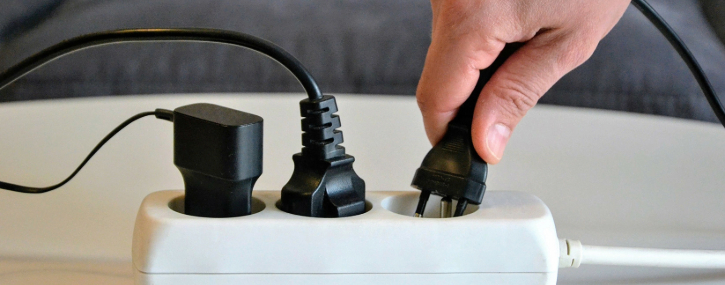As our planet faces increasing environmental challenges, it’s more important than ever to make conscious decisions about how we live our daily lives. One of the most impactful ways to contribute is by creating a sustainable home. By adopting simple habits and making small changes, you can significantly reduce your carbon footprint and help protect the planet for future generations. Here are some easy tips to get started:

1. Switch to Energy-Efficient Light Bulbs
Replacing traditional incandescent bulbs with energy-efficient LED bulbs is one of the simplest ways to reduce energy consumption. LED bulbs use up to 80% less energy and last much longer, which can save you money on your electricity bills and reduce your carbon footprint. They are available in various styles and brightness levels to suit all your lighting needs.

2. Unplug Electronics When Not in Use
Many electronics, such as chargers, televisions, and kitchen appliances, continue to draw power even when turned off. This “phantom energy” consumption can account for up to 10% of your home’s energy usage. To combat this, unplug devices when they’re not in use, or use a smart power strip that cuts off power when devices are not active.
3. Install Low-Flow Showerheads and Faucets
Water conservation is a crucial aspect of sustainable living. Installing low-flow showerheads and faucets can reduce your water usage by up to 60%, which not only conserves water but also reduces the energy needed to heat it. Look for products with the WaterSense label, which meet EPA criteria for water efficiency.

4. Use Reusable Shopping Bags
Plastic bags contribute significantly to pollution and environmental degradation. By investing in reusable shopping bags and taking them with you whenever you shop, you can reduce the amount of plastic waste that ends up in landfills and oceans. Many stores now offer incentives for bringing your own bags, making this an easy and eco-friendly habit to adopt.

5. Plant a Garden
Growing your own fruits, vegetables, and herbs not only provides fresh, healthy produce but also reduces the need for transport and packaging, lowering your overall carbon footprint. Additionally, gardening can improve air quality and provide a habitat for pollinators like bees and butterflies. Even if you don’t have a large yard, container gardening on a balcony or windowsill can still make a difference.
6. Use a Programmable Thermostat
A programmable thermostat can help reduce energy usage by automatically adjusting the temperature based on your schedule. You can set it to lower the heat when you’re sleeping or away and raise it before you wake up or return home. This can save energy and reduce heating and cooling costs by up to 10% annually.
7. Switch to Eco-Friendly Cleaning Products
Traditional cleaning products often contain harsh chemicals that can harm the environment and your health. Opt for eco-friendly alternatives that use natural ingredients and come in recyclable packaging. You can even make your own cleaning solutions using simple household items like vinegar, baking soda, and lemon.
8. Opt for Sustainable Building Materials
If you’re planning any home renovations, consider using sustainable materials like bamboo, reclaimed wood, or recycled metal. These materials are more environmentally friendly than conventional options and can add a unique, natural aesthetic to your home.
9. Implement a Recycling Program
Set up a dedicated recycling station in your home and educate your family on what can and cannot be recycled. Many communities offer curbside recycling programs, making it easier to dispose of items like paper, cardboard, glass, and certain plastics responsibly.
10. Reduce Food Waste
Food waste is a significant contributor to greenhouse gas emissions. Plan your meals, store food properly, and compost kitchen scraps to minimize the amount of food that ends up in the landfill. Composting also provides nutrient-rich soil for your garden, creating a sustainable cycle.
By incorporating these easy and effective tips, you can create a more sustainable home and reduce your environmental impact. Every small action adds up, and together we can make a significant difference in protecting our planet for future generations.
Sources:
NRDC – National Resources Defense Council

 Facebook
Facebook
 X
X
 Pinterest
Pinterest
 Copy Link
Copy Link

